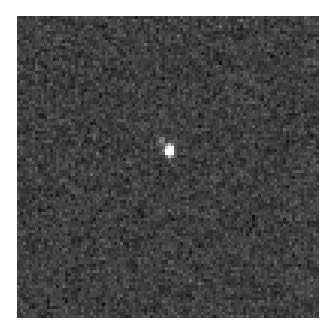You’ve been in space for 7.5 years, heading to the outer reaches of our solar system. In two years you’ll have a once in a lifetime opportunity. Everything better work perfectly then, because there’s no do-over, you’ve got just one shot. What would you do to make sure that everything goes according to plan? Practice, of course.
NASA’s New Horizons (NH) spacecraft is on its way to Pluto, with its closest approach set for the 14th July, 2015. In preparation for the encounter, the mission team has recently performed a 9-day dress rehearsal of the final approach, leading up to the historic flyby.
Since leaving Earth in January 2006, the spacecraft has spent much of its time going in and out of planned hibernation and science sequences. During the journey, the mission team has spent time making adjustments to the trajectory and regularly putting the flight software through its paces to work out any bugs in the coding. Equally the human element needs to practice through mission simulations to work out any of their own bugs.
As part of those simulations, the Deep Space Network, including CSIRO’s Canberra Deep Space Communication Complex, are called upon to support New Horizons and the mission team during these practice runs, sending commands and receiving information back from the spacecraft.
The most recent simulation was a real-time exercise monitoring the response of the spacecraft to the programmed encounter sequence and the response of mission planners to any problems that arise.
According to mission Principal Investigator Alan Stern, “…from all the data we’ve seen, NH has performed flawlessly and the encounter sequence is free of serious bugs.”
While the close encounter is still two years away, New Horizons is already returning its own unique science. In July, for the first time its telescopic cameras could see Pluto and its largest moon, Charon as separate objects.
Pluto and its moon Charon taken by New Horizons in early July 2013
New Horizons Long Range Reconnaissance Imager (LORRI) composite image from early July 2013 showing Pluto (brighter object in the centre) and Charon (fainter at 11 o’clock position), Pluto’s largest moon. (Credit: NASA/Johns Hopkins University Applied Physics Laboratory/Southwest Research Institute)
The real fun will start ten weeks before New Horizons reaches Pluto when it will begin seeing more detail than possible through the Hubble Space Telescope. At closest approach New Horizons will be 12,500 kilometres from the surface of the dwarf planet producing the best pictures possible of Pluto, its system of moons and huge amounts of data from its science instruments.
It’s expected to take up to nine months after New Horizons leaves Pluto for all data collected to be sent back to Earth via the Deep Space Network.
Assuming all continues well with the spacecraft, New Horizons will head deeper into space through the Kuiper Belt where it is hoped it will encounter more strange and distant worlds.
You can follow New Horizons’ continuing journey on its website and via Twitter.



Pingback: Pluto flyby on the Horizon | Universe @ CSIRO
Pingback: Pluto’s defining moment | Universe @ CSIRO